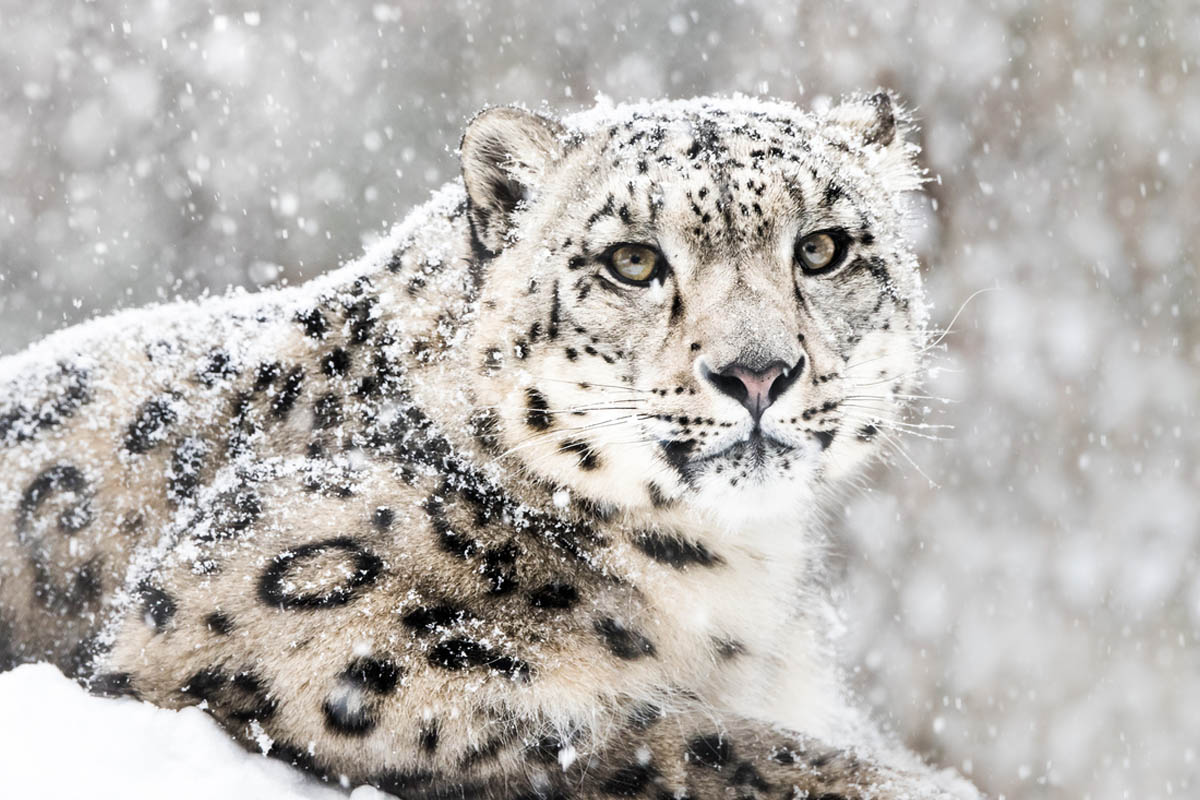13 soldiers killed in suicide attack in Pakistan’s Khyber Pakhtunkhwa province
Over a dozen soldiers have been killed and several others injured in a suicide attack in Khyber Pakhtunkhwa province of Pakistan, officials said
The snow leopard – the shy, mountain dwelling predator – is on top of this alpine food chains.
Abhiroop Chowdhury, Aliya Naz and Armin Rosencranz | New Delhi | August 26, 2021 3:51 pm

(Photo: iStock) representational image
Afghanistan is again under Taliban’s control. On 8 July 2021, President Biden defended the US pull-out of Afghanistan by focusing on the superiority of the 300,000 trained Afghan soldiers over only 75,000 Taliban fighters. Internal and international conflicts are not new for this region. 1978- 79 marked the beginning of modern hostilities in Afghanistan when Soviet forces sought to control this geopolitically strategic central Asian nation.
In that war, the Soviet Union supported the Afghan communist government against the Mujahedeen militias. The North Atlantic Treaty Organization (NATO) supplied monetary support and ammunitions to these Mujahedeen. Soviet troops tried to assert dominance until 1989. In 1991-92, the Soviet Union collapsed, along with their efforts to control Afghanistan.
Advertisement
This futile conflict impacted more than 1.5 million Afghans. The ‘political vacuum’ that followed the end of the cold war instigated the transformation of the initially ‘freedom’ fighting group of Mujahedeen to the radical Taliban. Their idea of establishing pan Islamic nations across the globe and their role in numerous human right violations, made international bodies enforce strict economic-military sanctions on this regime.
Advertisement
This pushed them closer to terrorist groups such as Al-Qaeda. Ultimately, these strings of political events led to the 9/11 attack of 2001, the worst terrorist attack in the modern era. Again, it brought conflict back in the biodiversity-rich, climate change impacted Afghanistan.
Situated in the cross-roads of Central Asia – China and the Himalayas – Afghanistan has unique biodiversity and fragile ecosystems. This landlocked war-torn nation is part of the ‘Central Asian Biodiversity hot spot’ as per ‘Conservation International’. This unique landscape is home to approximately 5000 species of flora and fauna.
The 2009 census indicated around 4,000 native species of vascular plants, 515 species of birds, 150 species of mammals, 139 species of fish, 112 species of reptiles, and 6-8 species of amphibian found in this eco-region. The snow leopard – the shy, mountain dwelling predator – is on top of this alpine food chains.
Afghanistan is worst hit by the vagaries of climate change. The severe 2018 draught has impacted 13.5 million Afghans. Temperature rise has already been impacting the melting rate of glaciers. July 2018 saw the collapse of a dam due to rapid melting of glaciers near Herat, the third most important city. These long conflicts have degraded the natural resources and biodiversity.
Deforestation and land degradation goes unchecked across the nation. Afghanistan lost about 1.85 thousand hectare of tree cover between 2001 and 2020. Illegal wildlife hunting and timber trade also increased. The Taliban used the opium trade and mineral exports through illegal mining to accumulate funds for their campaigns.
This accelerates deforestation. Even during the NATO supported President Ashraf Ghani regime, the rural areas and important roadways were still held by Taliban that facilitated their trade and monetary influx. Political analysts aver that ‘whoever held the roads rules Afghanistan’. The groundwater level decreased through overexploitation in these years.
About 80 per cent of the population of Afghanistan is dependent on the natural resources for its livelihood. Amidst the conflicts, in 2005, the ruling Government (Afghan president Hamid Karzai) established the National Environmental Protection Agency (NEPA). The basic aim of NEPA is to combat climate change, preserve natural heritage and resources, ensure sustainable development as per UN SDG goals and mitigate environmental pollution issues.
All of these pro-environmental ventures are now in shadows. When the international community is alarmed by the recent developments in Afghanistan, China, its largest neighbour, seemed not bothered by the events in its backyard. The 17 August statement of China made it clear that they are willing to work with the new government provided they revoke their support to the East Turkestan Islamic Movement.
This movement advocates independence of Uyghur Muslims under Chinese dominance and allegedly has close ties with the Taliban. China has been criticized extensively for its human rights violations against Islamic minorities including Uyghurs across the globe. This brings a new enviropolitical perspective on Afghan instability. The ‘Belt and Road’ initiative of China requires support of the Afghan government.
The international community is debating the alleged role of China in promoting the illegal wildlife trade resulting in poaching of several endangered species such as Pangolin and Tigers. With the Chinese shadow looming large over the environmentally oblivious Taliban, the fate of the nation’s environment is uncertain. Only time will tell whether the new government will support or ignore the environmental reforms initiated by its predecessor.
(The writers are, respectively, Associate Professor, Independent researcher and Dean at Jindal School of Environment and Sustainability, O.P. Jindal Global University, Sonipat, Haryana)
Advertisement
Over a dozen soldiers have been killed and several others injured in a suicide attack in Khyber Pakhtunkhwa province of Pakistan, officials said
Health authorities have confirmed the first case of wild poliovirus in Gilgit-Baltistan this year, raising Pakistan's nationwide tally to 11 in 2025.
US President Donald Trump has signed a proclamation to ban entry of individuals from 12 nations - Afghanistan, Myanmar, Chad, the Republic of the Congo, Equatorial Guinea, Eritrea, Haiti, Iran, Libya, Somalia, Sudan, and Yemen, citing national security and public safety threats, according to the White House.
Advertisement
